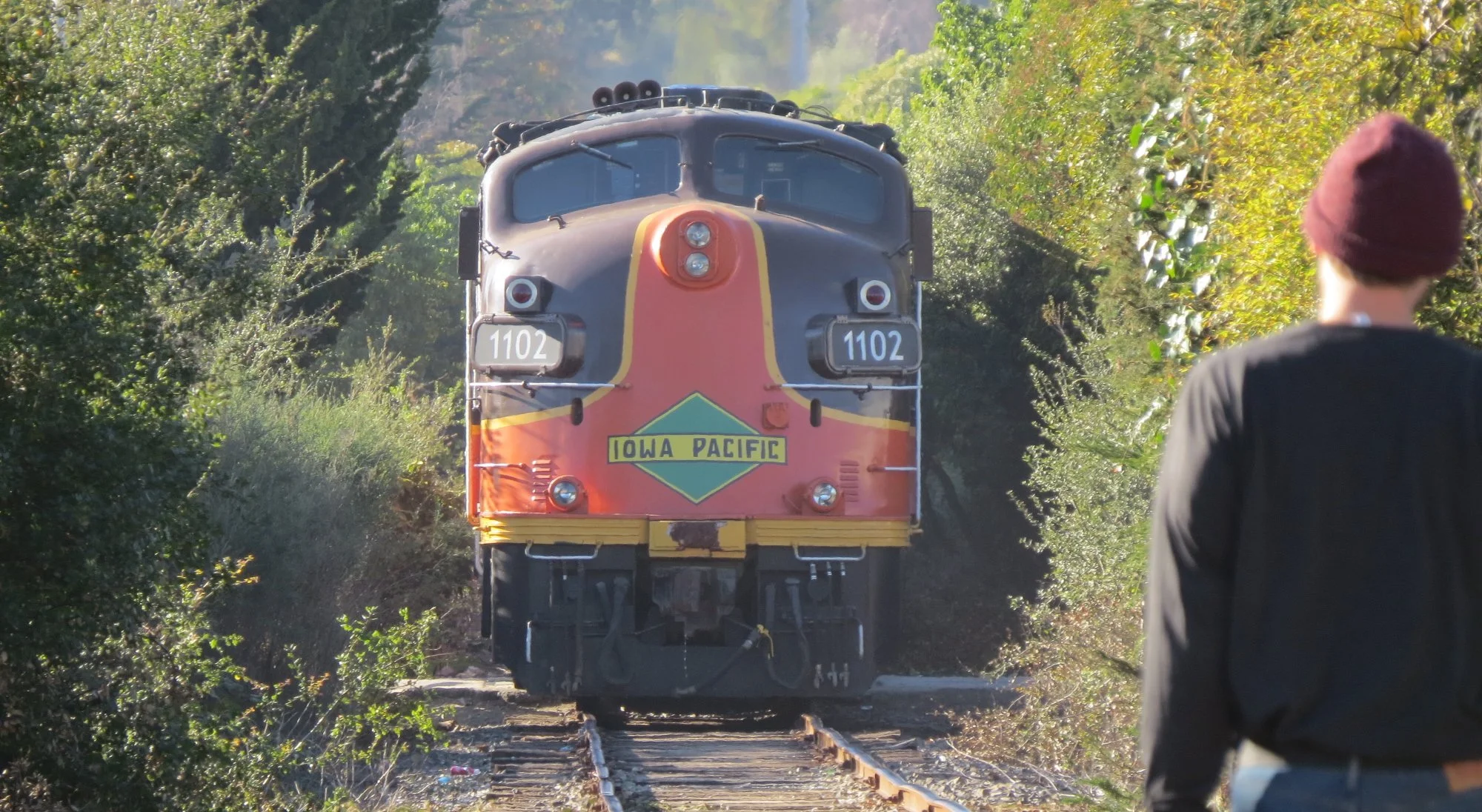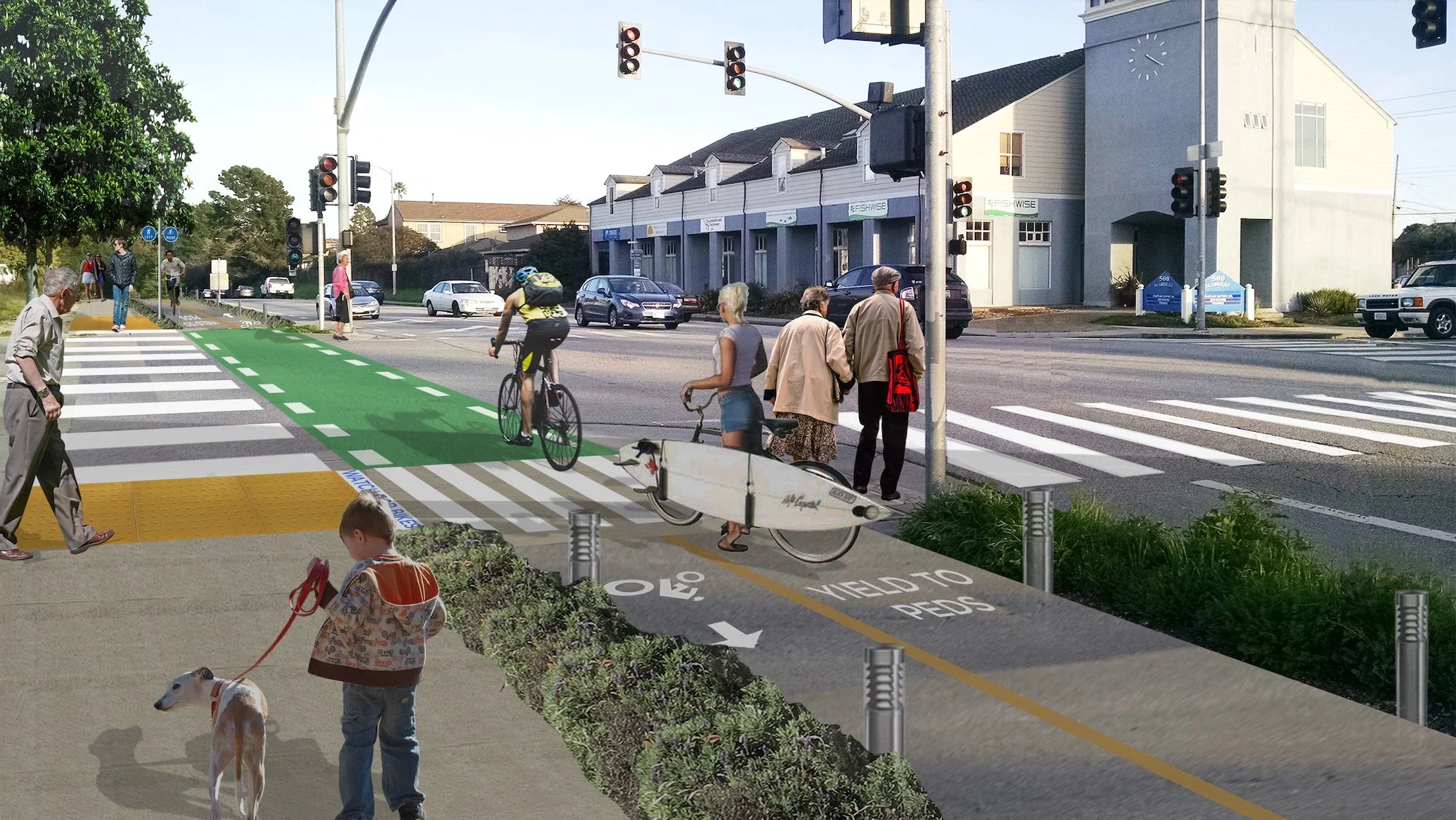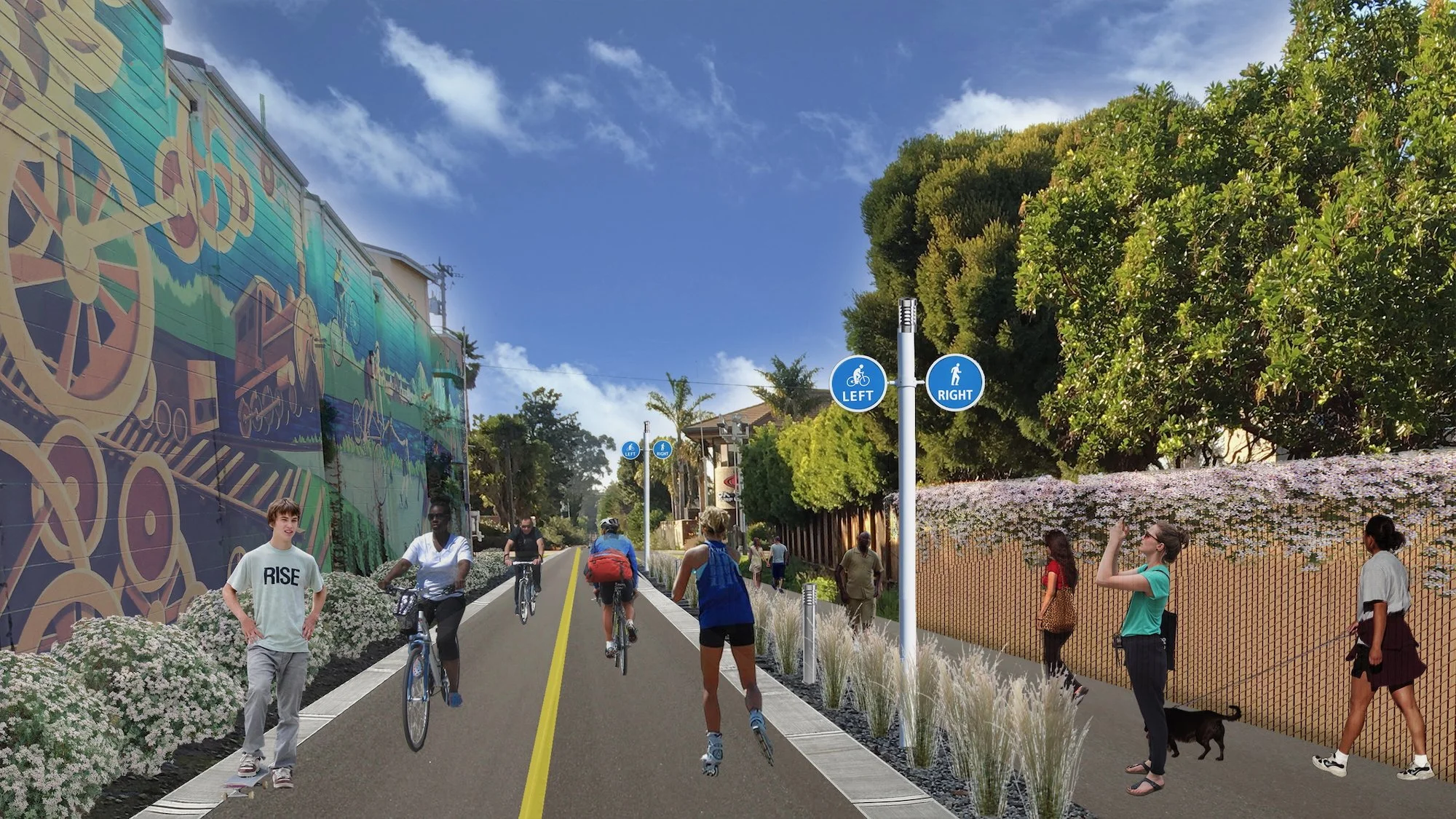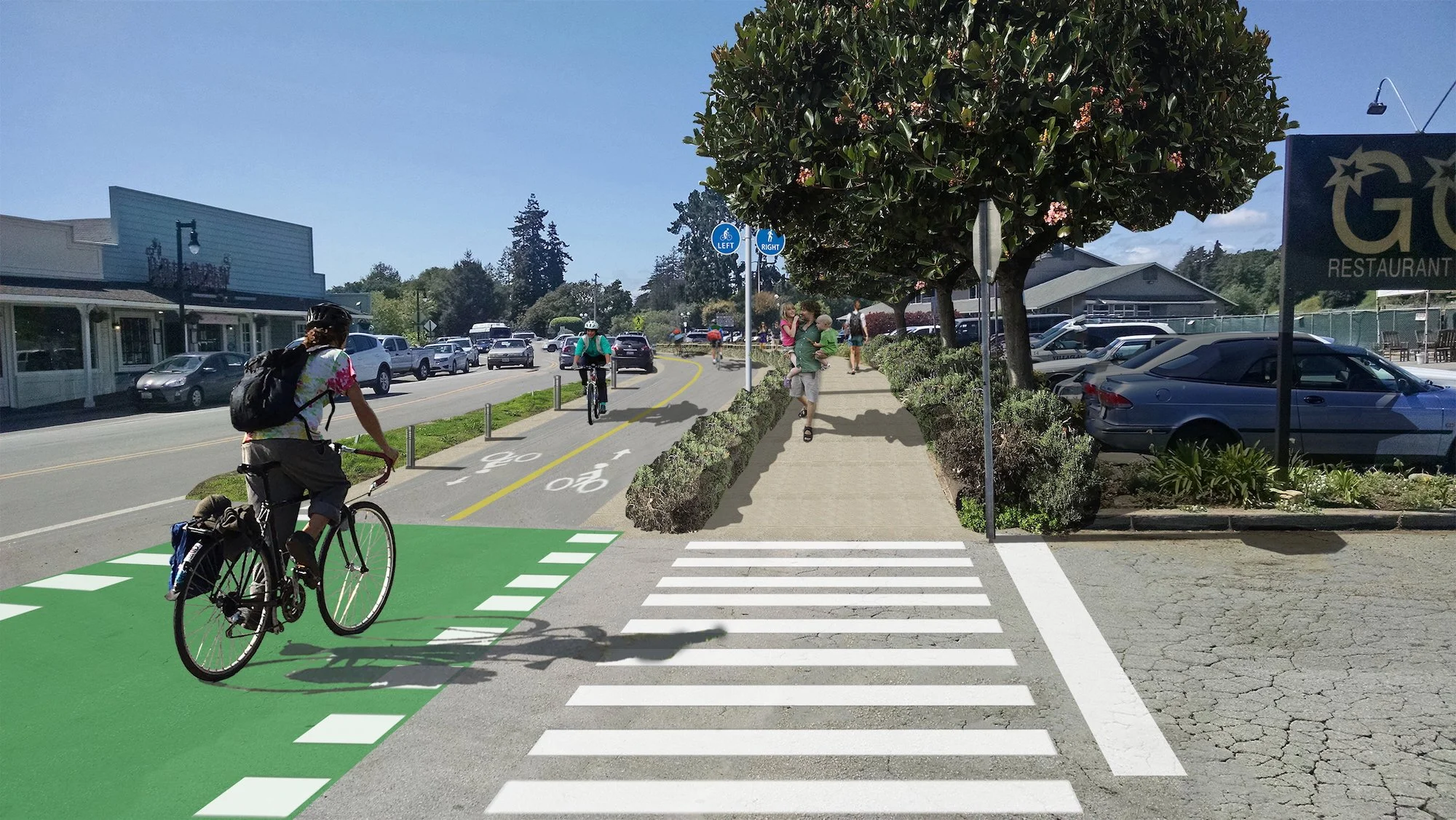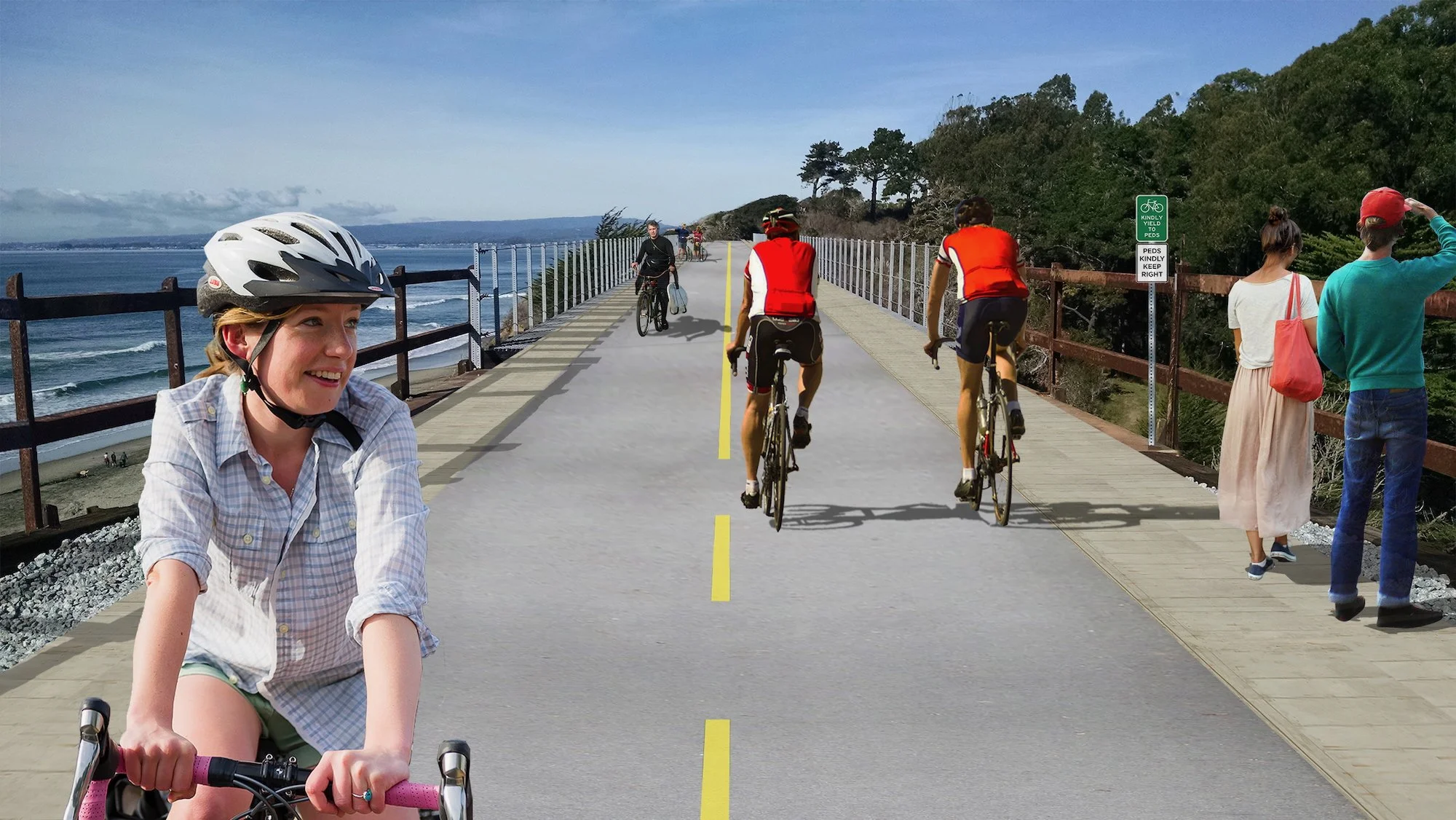Rail Was Never Going to Work
Why did it take over 40 years to figure that out?
Article, opinion, and photo by Will Mayall
Commuter rail hasn’t operated in Santa Cruz County for more than 80 years—and for good reason. The corridor was never well suited to modern passenger service. Yet for decades, we’ve chased the idea of bringing it back. A long series of studies and reports has examined the prospect, and they identify the same fundamental problems: high costs, challenging terrain, low population density, limited ridership, and serious physical constraints. These issues haven’t faded with time—they’ve only grown worse as infrastructure has aged and costs have soared. After all these years, and more than a decade of public ownership, we’re still clinging to a vision that was never grounded in practical reality.
Let’s be clear: the idea of a train is what’s held everything back. A safe, full-width trail has long been popular and possible. But layering an expensive, complex passenger rail system onto a narrow, winding, and heavily constrained corridor was never going to work—and both the staff and politicians on the Santa Cruz County Regional Transportation Commission (RTC) should have recognized that years ago. Santa Cruz County is one of the least populated counties in California. Rail simply doesn’t match our scale or needs.
Many of the major problems have been obvious to anyone who’s simply walked the corridor (which many RTC members have not):
A single, outdated track built for freight
Tight, winding curves
Narrow right-of-way
Deteriorating bridges
Numerous street-level crossings
Homes and properties pressed up against the corridor
There seems to have been an extraordinarily poor understanding of what was being purchased back in 2012. That purchase came after more than a decade of “extensive due diligence and negotiations,” according to the RTC. Yet somehow, even after all that time and effort, they failed to acknowledge the corridor’s basic limitations. It’s as if the purchase was driven more by a dream than by a clear-eyed look at reality.
So why has it taken so long to admit the truth? And what has that dream cost us—in time, money, and opportunity?
About 20 years ago, Friends of the Rail and Trail (FORT) began to champion the idea of a shared corridor—one that could support both a passenger train and a trail. It was an inspiring concept, and it helped rally public support around a vision for expanded access and sustainable transportation. FORT deserves credit for raising awareness and encouraging trail development. But as planning advanced, it became increasingly clear that the corridor simply isn’t wide enough in many places to safely accommodate both. Ironically, the popularity of the trail has only underscored how impractical the rail-and-trail model is. What began as a hopeful compromise now presents a hard choice—and it’s time to prioritize what actually works: a trail.
It was always going to cost a huge amount.
The corridor is old and in bad shape. There are 28 bridges, most of which need to be replaced. The single track must be upgraded. Crossings need modern signals and protection. Stations and maintenance facilities must be built from scratch. All of this in a corridor that is narrow, winding, and pressed against homes. The estimated cost? Over $4 billion—more than $180 million per mile. That’s not surprising. It was never going to be cheap. But this goes far beyond expensive. We can’t afford it.
It was never going to fix traffic.
The train would serve only a small fraction of residents. It doesn’t go near UCSC, misses major job centers, and—while it parallels Highway 1—would do almost nothing to relieve congestion. Even the best-case projections show that less than 1% of Highway 1 trips would be diverted. The SCCRTC’s own studies confirm this. It simply wouldn’t help the vast majority of drivers.
It was never about true transportation equity.
If this were about helping those who need it most, we’d invest in METRO. Instead, the plan spends billions on a train that would primarily serve tourists and more affluent, white-collar commuters—a pattern well documented in rail systems across the country. Meanwhile, people in South County are still stuck without options.
There was never room for both rail and trail in much of the corridor.
Some parts are wide. Most are not. In places like Capitola and Live Oak, the corridor is so narrow that fitting both means cutting into private property, walling off neighborhoods, or building expensive infrastructure. The City of Capitola has already raised serious concerns, including safety risks through Capitola Village and threats to places like Castle Mobile Home Estates. These aren’t technical details—they’re fundamental problems.
It has always required railbanking.
To build a real trail now—wide, continuous, and safe—the corridor must be railbanked. That’s the legal process that allows us to remove the tracks while preserving the corridor for future transit. Railbanking doesn’t abandon the corridor. It protects it. The RTC studied railbanking when it purchased the corridor and again just a few years ago. Both times, the analysis found no clear reason not to pursue it—and yet, the RTC never moved forward. Why? If the goal is to preserve the corridor, build a usable trail, and leave the door open for future transit, then railbanking has always been the logical step.
We’ve known the truth for decades.
Some of the earliest available studies date to the 1980s. The studies that followed identified the same core issues. Over and over again, the data showed the same thing: limited ridership, high capital costs, and fundamental corridor constraints. Each new study added to the case, and rarely challenged the findings of the last. If anything, projections became less enticing and a train less likely.
The train plan isn’t a plan. It’s a wish that doesn’t hold up to scrutiny.
We’ve owned this corridor since 2012, and we’ve studied the rail idea for decades. While the full Zero Emission Passenger Rail & Trail Project (ZEPRT) report is expected in August, the ZEPRT Executive Summary already makes one thing clear: previous studies dramatically underestimated the costs, and the projected benefits were never enough to justify them. It’s time for the RTC to stop pretending there’s more to figure out. Like every plan before it, this one belongs on the shelf.
Let’s close the book on an unworkable dream—and finally commit to something real: a trail that’s wide, safe, connected, and ready to serve the people of Santa Cruz County.
Let’s stop chasing myths. Let’s build something real, affordable, and useful—a trail that works for everyone.
Rail Studies on the Santa Cruz Branch Line
Note: This is not a comprehensive list.
1980 – Intercounty Passenger Rail Study, (referenced by the 1983 study)
1983 – RTC Commuter Rail Study, 83 pgs
1989 – Urban & Suburban Corridor System Study Part 1, Part 2, 100 pgs
1998 – Major Transportation Investment Study (MTIS), 76 pgs
2002 – Santa Cruz Branch Line Economic Analysis, 27 pgs
2003 – Santa Cruz Branch Line Intra-County Recreational Rail Options, 90 pgs
2005 – Capitola & Aptos Recreational Rail, 99 pgs
2010 – RTC Rail Property Acquisition FAQs, 11 pgs
2015 – Rail Transit Feasibility Study, 197 pgs
2019 – Unified Corridor Investment Study (UCIS), 344 pgs
2021 – Transit Corridor Alternatives Analysis & Rail Network Integration Study (TCAA), 334 pgs
2025 – Zero-Emission Passenger Rail & Trail Project Executive Summary (ZEPRT), 19 pgs, Full report in August 2025


